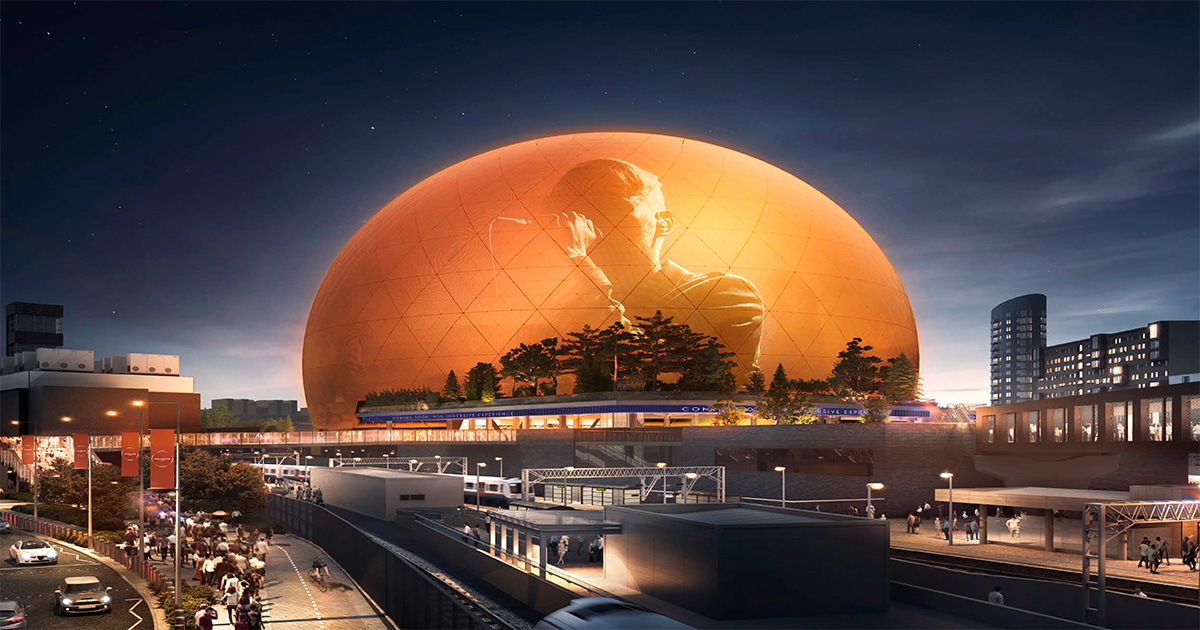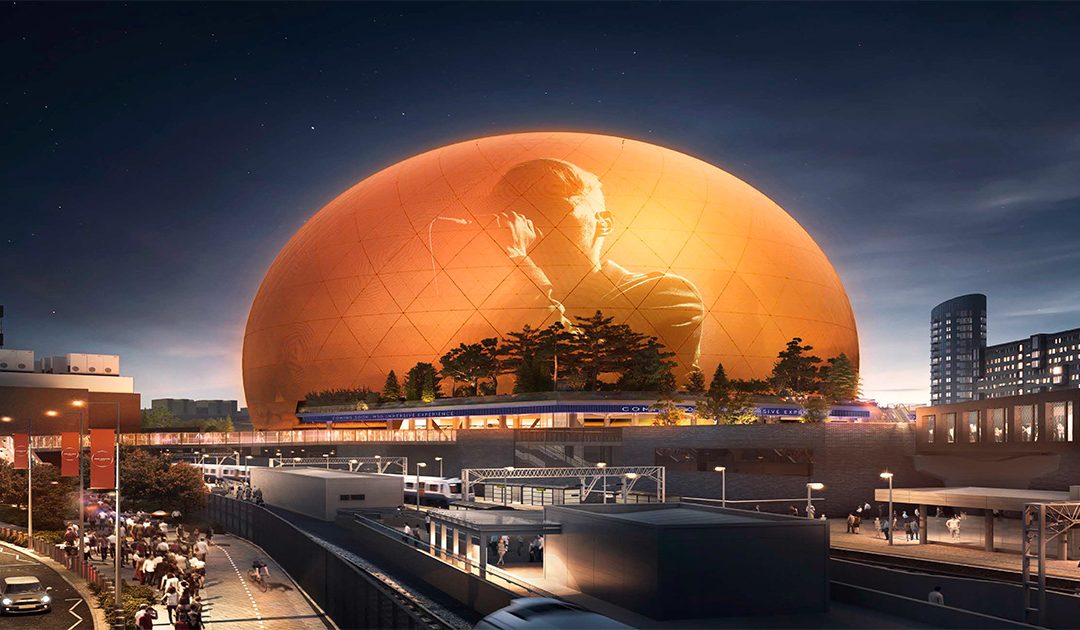
Artificial lighting and abatement notices: when will the courts catch up with policy makers?
Light pollution is the subject of this article, in particular the current application of the statutory nuisance regime and common law nuisance.
The picture provided is taken from the planning application for the MSG Sphere made to the London Legacy Development Corporation on 14 March 2019, being an “application for advertisement consent comprising the illuminated display of Sphere building and LED displays … accompanied by a detailed application seeking … permission for a new entertainment and leisure building” (19/00098/ADV). Check out the Sphere in Las Vegas at https://bit.ly/3M5oGVK.
If built in London, the Sphere would dwarf anything in respect of which the courts have been invited to make a ruling concerning lighting. The picture illustrates a key issue in such cases. There is no enforceable ‘right to a view’, and just because a lot of light is emitted from a building, that does turn those emissions into a nuisance: so much depends on the impact on a complainant’s property.
Turning to the statutory nuisance regime, as from 6 April 2006, artificial lighting joined the list of potential sources of pollution under s.79(1) EPA 1990 (along with insects). This means that local authorities are required to serve an abatement notice if satisfied that there is a nuisance or prejudice to health.
There are only occasional, anecdotal, accounts of local authorities making use of the power to serve abatement notices in respect of light, and to date there has been little sign of any common law actions in respect of light nuisance, although for my part I have advised in respect of a few significant intrusions and the risks faced by entities such as car park undertakings.
Section 79(1)(fb) is concerned with “artificial light emitted from premises so as to be prejudicial to health or a nuisance”. There is a long list of exemptions under s.79(5B), so that s.79(fb) does not apply to airports, harbours, certain railway premises, tramways, bus stations and “public service vehicle operating centres”, goods vehicle operating centres, lighthouses and prisons. The general rule under s.80 EPA 1990 is that the defence of ‘best practicable means’ is only available if the premises from which the artificial light is emitted constitute “industrial, trade or business” premises, or if the emissions are from a sports facility.
As to cases falling within the common law, Leggatt JSC, when giving the majority judgment in Fearn v. Tate Gallery Trustees [2023] 2 WLR 339, referred to Commonwealth and American cases concerned with nuisance caused by floodlights, advertising signs and the reflected glare of the sun. He also emphasised that the dearth of cases in any particular area is not an obstacle to a private nuisance claim, given that the basic concepts can readily be applied to a never-ending variety of circumstances, especially where the complainant occupies a dwelling-house.
There has been an added interest in light pollution by academics and policy-makers.
In 2022 John Eklöf’s The Darkness Manifesto was published by Bodley Head after a scholarly lifetime studying bats. It gave rise to a certain amount of interest with its enthusiasm for “the natural cycle of day and night” and its warning calls about the effects on the environment (from insects upwards) and also on human health. Many of these themes were picked up by the House of Lords in its Committee Report The Neglected Pollutants: the Effects of Artificial Light and Noise on Human Health (July 2023), for instance the rapid spread of LEDs, the potential effects on health, the current approach of government (“confused”) and the lack of oversight, despite the existence of numerous environmental bodies. In this country, the 25 Year Environmental Plan was regarded as lacking “specific targets”, with little impetus from central government”. The five principles for good environment management set out in the Environment Act 2021 and the Environmental Policy Principles Statement do not apply to the management of light pollution. The National Planning Policy Framework removed the lighting requirements formerly in Planning Policy Statement 23. The Government is due to respond on 17 November.
To date the UK Courts have also shown little enthusiasm for light pollution cases, but they can only decide issues cases which are presented to them. The recent (2023) cases of R (Whiteside) v. Croydon LBC [2023] EWHC 1806 and Watton v. Cornwall Council [2023] EWHC 2436 (Admin) were both planning challenges.
In Whiteside the target was a consent for digitally illuminated advertising at a bus stop. Watton concerned a proposed crematorium in the open near the Cornish coast. The Court had little hesitation in dismissing the former, which it decided was a matter of planning judgment. The Court quashed the permission in the latter on a number of grounds, but these indirectly concerned the effect on the natural environment, in particular the light-effects on bats. It was not concerned with the potential effects on residents.
Now that the Committee of the House of Lords has issued its Report, it will be interesting to see whether or not this produces any momentum bringing more claims of light pollution before the Courts. The likelihood is that there will be more challenges to the grant of planning consent, but the threat of statutory and common law nuisance actions should be of more concern to any commercial undertakings generating substantial emissions of artificial light. At the same time, it is by no means clear that redress will be available for the wider consequences of lighting as perceived by policy-makers.
Turning back to the MSG Sphere in London (picture attached), the capacity of the entertainment stadium is said to be 21,500 and “the external surface of the Sphere will comprise stainless steel panels with embedded LEDs” which can be illuminated as necessary for advertising or other purposes. The planning application is currently before the Secretary of State, who is considering whether he should determine the application. The picture is taken from the developer’s Design and Access Statement dated 2019.
